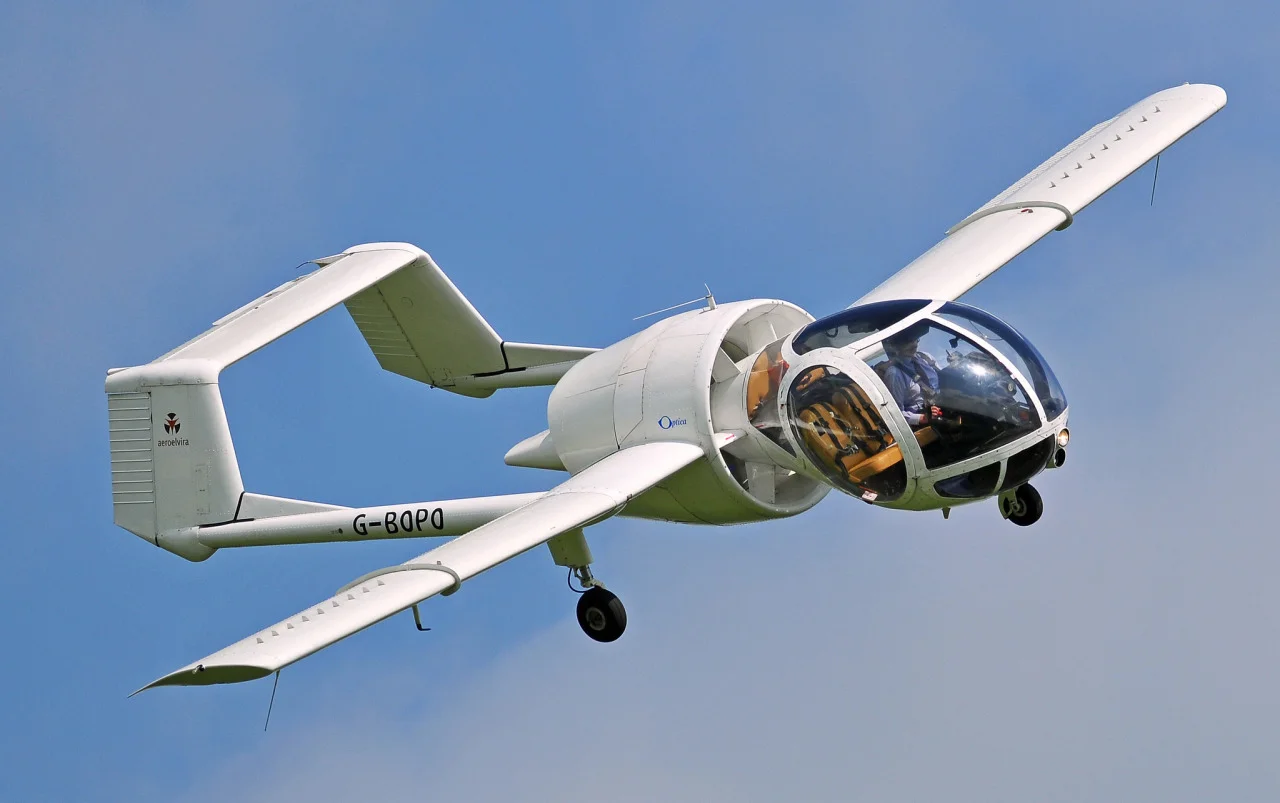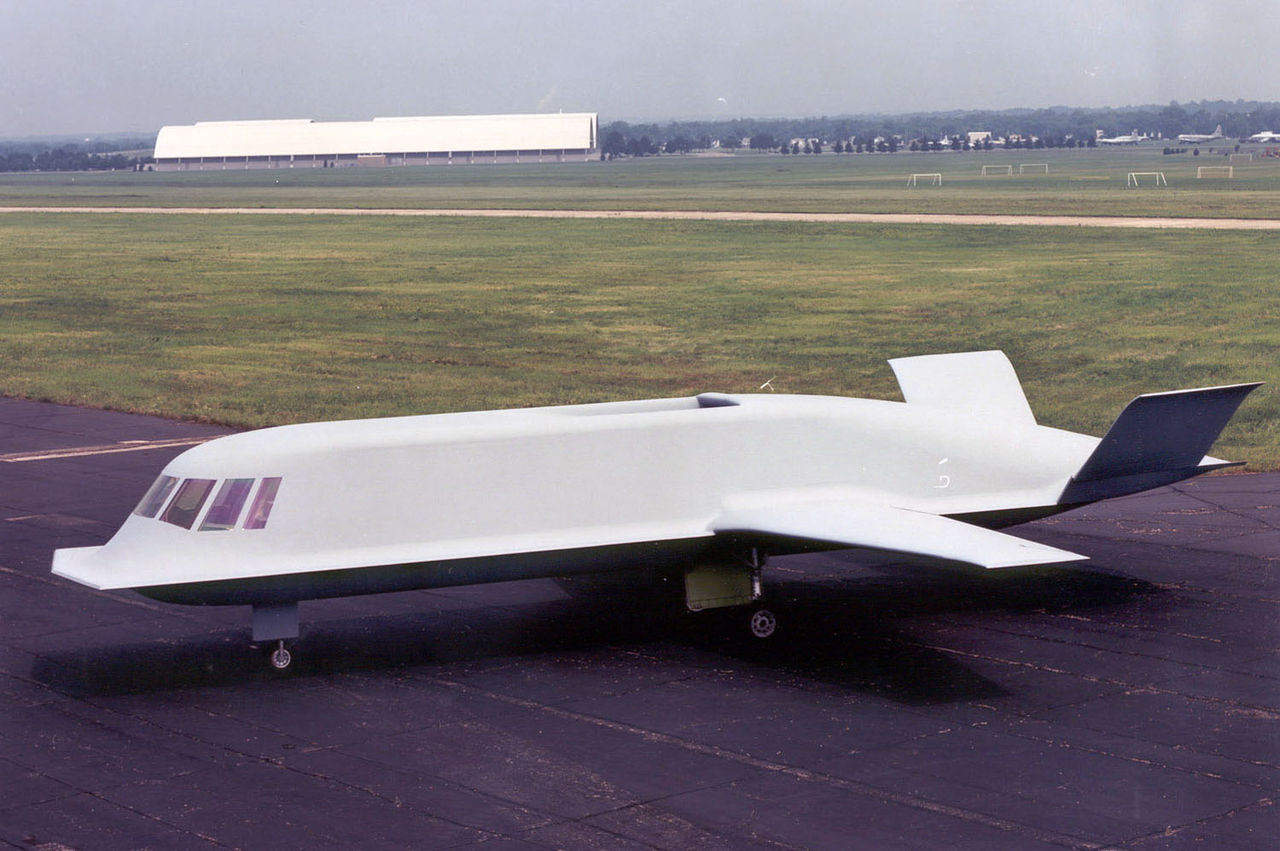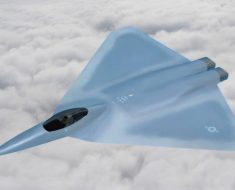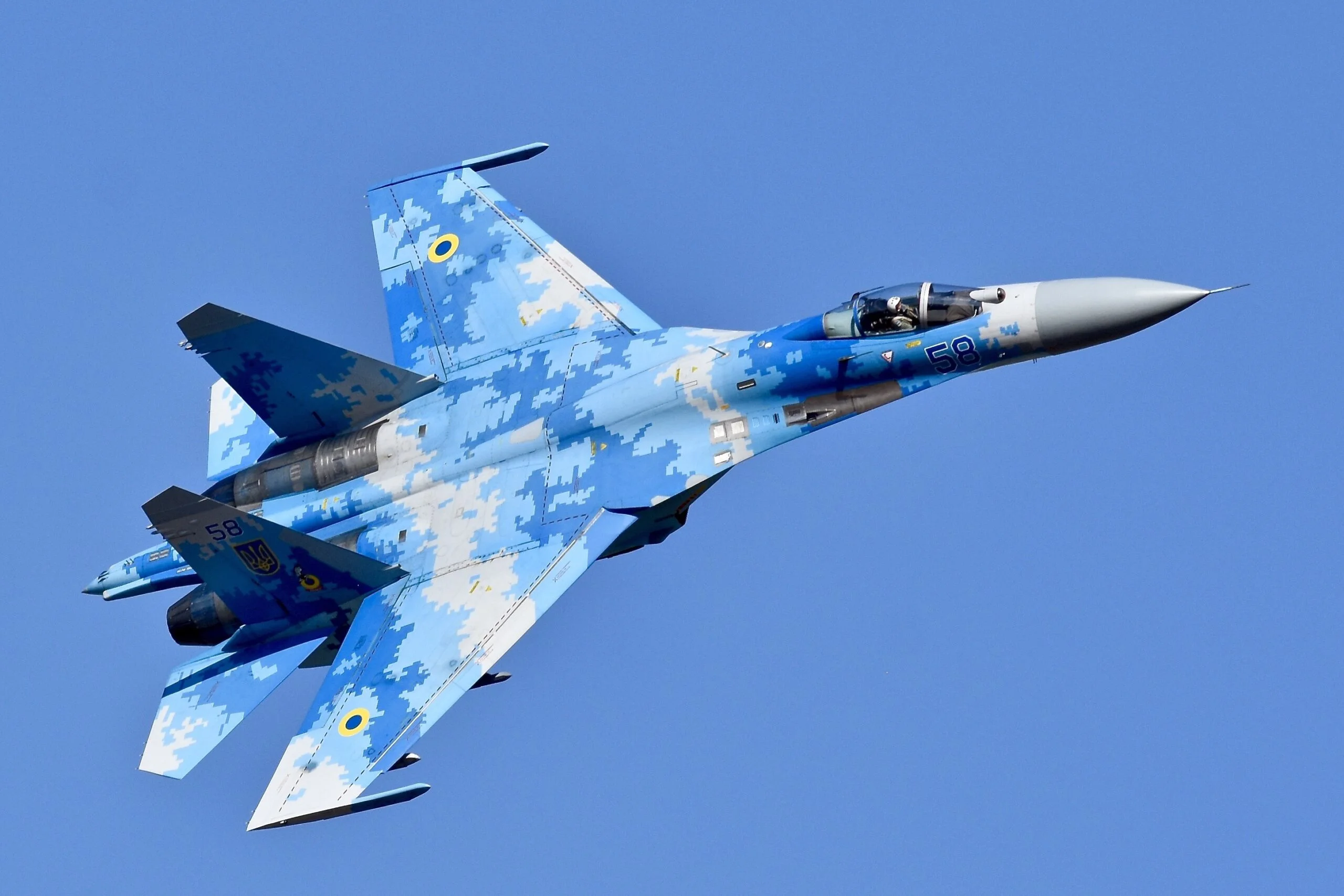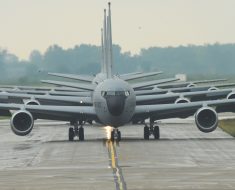The Edgley EA-7 Optica is a British-designed and built aircraft for low-speed observation work that could loiter extremely slowly and for long periods of time. Its odd-looking canopy provides panoramic views and would be the perfect place to spend a sunny afternoon and admire an almost unobstructed view.
The Optica set itself apart from conventional fixed-wing aircraft with its extremely low speeds, great stability and long endurance. This made it perfectly suited as an observation or photography platform.
Unfortunately for the Optica, it would seem that fate simply did not want it to exist.
Contents
Background
Humans have always been fascinated with flight and after the first flight by the Wright Brothers, many different designs to fulfill all types of roles have been put forward.
As planes became more competent and the designs moved forward, the idea of a plane that could hover became more and more interesting. Being able to take off vertically would eliminate the need for long runways. This is ideal for operating in smaller spaces and has great tactical benefits for military use.
What became the helicopter would provide extremely useful across the globe for a variety of reasons.
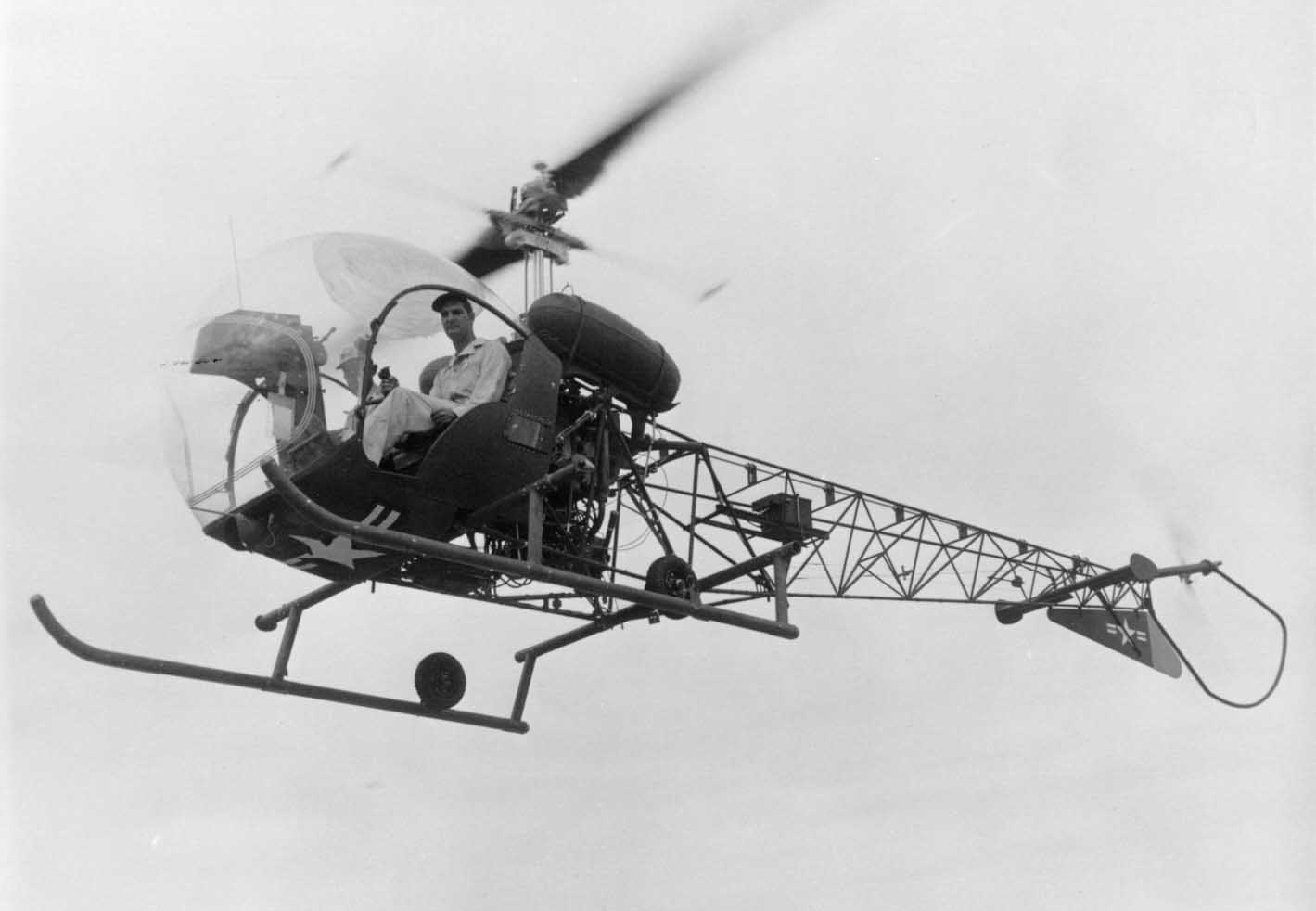
But naturally, helicopters don’t come cheap. They’re extremely complicated and can be notoriously difficult to fly. The trade-off for the ability to hover is the instability that it brings with it.
So ideally, you would want a low cost, easy to fly aircraft that would be able to fly slowly enough to have a similar use as a helicopter.
Cue the Optica.

Specifications were laid out for an aircraft with excellent low-speed handling and able to fly very slowly. Whilst it may look like quite a modern design, it actually made its first flight in December of 1979.
The Optica
The EA-7 was designed by John Edgley in the mid-70s and was intended to be a three-seat aircraft ideal for touring. His design gained a lot of attention as nobody had seen something so visually unusual before that could actually fly.
A model was tested in 1975 in a wind tunnel and the construction of the first prototype began only a year later in London. The final assembly was carried out at Cranfield.
The most intriguing thing about the Optica is how it is powered. It is not a jet engine aircraft, yet there are no obviously visible propellers in comparison to something like a Piper Warrior, for example.

The engine and propeller are actually mounted aft of the cockpit, this design choice means that visibility is almost 270 degrees for the passengers and pilot.
Utilizing a Textron Lycoming IO-540-V4A5D flat-six engine that produced 260 hp (190 kW), the Optica could reach a dizzying top speed of 132 mph (213 km/h). But this machine was not built for speed. It was built for unparalleled views whilst flying. The cockpit was perfect for taking pictures whilst flying especially with glass almost under your feet.
Even more impressive is its low-speed handling abilities – the stall speed is a mere 67 mph (108 km/h), which for a fixed wing aircraft is virtually unheard of! To top it all off, the weedy engine used so little fuel that it could fly for eight hours!
The most important feature of the Optica is the ability to comfortably loiter at 81 mph ( 130 km/h).
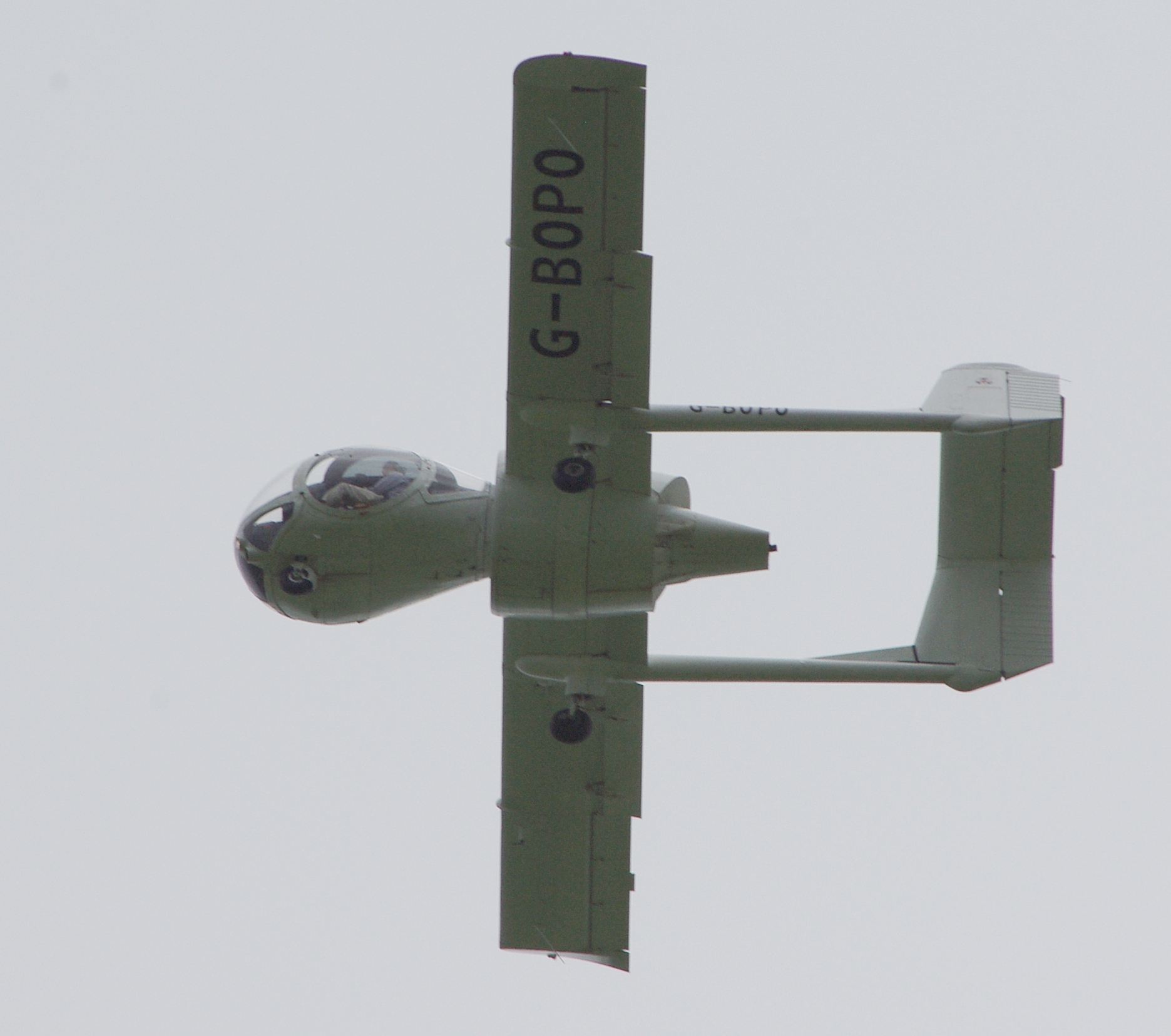
Edgley initially aimed to keep the cost of his new project down. He planned for a production run of over 200 aircraft starting in 1983. Each Optica was to cost around $65,000 or around $240,000 today, which, for a brand new airplane, is not bad going.
This was achieved by making the EA-7 as simple as possible. The landing gear was nonretractable, saving money on upfront and maintenance costs and an all-metal airframe was used for maximum durability.
Edgley secured funding of $2.7 million and bought Old Sarum airfield to set up production for the 200 aircraft he planned to produce. But, unfortunately, a fatal crash of an early production Optica in 1985 led to the collapse of the company as customers lost faith in the design – despite it not being a fault of the aircraft.
Two people were killed in the crash; the pilot and an aerial photographer. After the UK Department of Transport Air Accidents Investigation gathered all the details of the crash, they released a statement saying ‘there was no indication that either structural or mechanical failure had occurred or of flying control malfunction or jamming.’

Once the investigation had concluded, it was decided the cause was due to the aircraft stalling in a turn at a high angle of bank.
Undeterred by this, Edgley ploughed forwards and created Optica Industries, which under this company name built 15 new EA-7s by the end of 1986. Depending on the source, eight to 14 of the 15 built were destroyed in an arson attack in 1987.
At this point, it seemed that everything was against the Optica making it into full-scale production.
Ultimately it never really saw success. Edgley’s company was reformed to Brooklands Aircraft and the Optica was renamed to the Scout Master and by 1990 nine more had been built and delivered. But these few sales were not enough and production stopped. Since then no new Optica/Scout Masters have been built.
However, there is still light at the end of the tunnel. For the last six years, there has been talk of the aircraft production starting up again as there is still significant interest in the project and as of 2022 there are still plans to relaunch the program.
Operational Usage
So why exactly was there so much hype around this unusual-looking, slow, and relatively simple aircraft? Well, the roles for this fixed-wing airplane were almost unlimited. Aerial photography, powerline inspections and even surveillance patrols for traffic reporting are all possible with the Optica.
Almost everything a helicopter could do, so could the Optica.
Compared to a helicopter, a fixed-wing aircraft typically operates at one-third the cost, plus it has better range and endurance and it is much smoother to fly and vibration free for photographers or sensors.
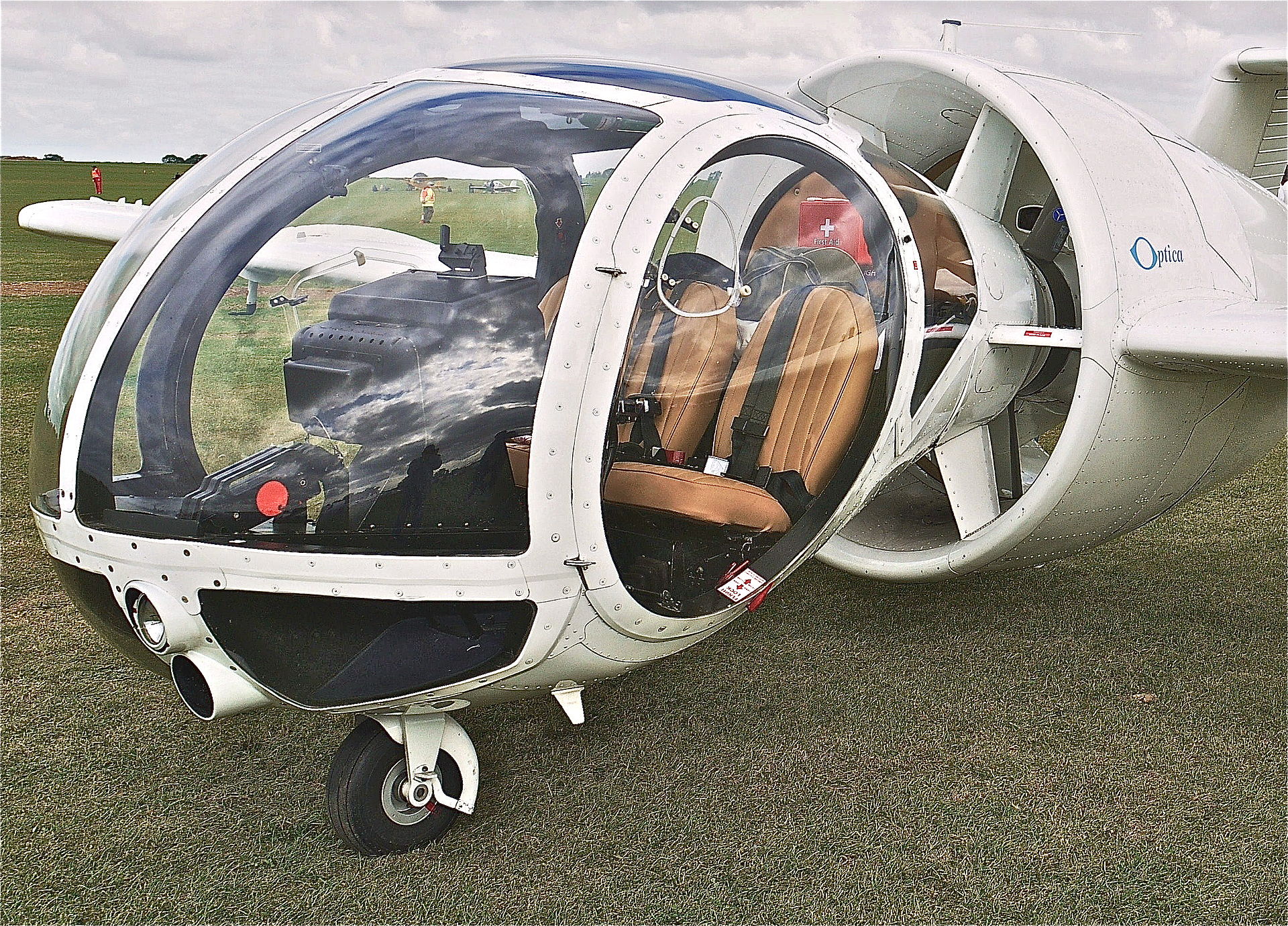
Unfortunately this excellent aircraft never really got the fame that it deserved as an excellent, relatively inexpensive aircraft that had a huge amount of uses all whilst being substantially cheaper and easier to fly than a helicopter.
It seems that everything was against John Edgley, but there still remains hope for this now relatively old design to prove its worth in the modern day.
Another Article From Us: Beechcraft Starship – a Failed Aviation Marvel
If you like this article, then please follow us on Facebook and Instagram.
Is The Edgley Optica Still Flying?
Yes, as of the latest information available, the Edgley Optica is still flying. Around five of the 22 Opticas built remain airworthy and operational worldwide.
Two of them are believed to be in the U.S., another two are in Australia, where they are used for aerial sightseeing tours, and one serves as a company demonstrator. So, despite the limited number, some Edgley Opticas are still in the skies.
Specifications
Maximum speed: 132 mph (213 km/h)
Cruise speed: 81 mph (130 km/h)
Stall speed: 67 mph (108 km/h)
Range: 656 miles (1,056 km)
Endurance: 8 h
Service ceiling: 4,275 m (14,026 ft)
Length: 8.15 m (26 ft 9 in)
Wingspan: 12.00 m (39 ft 4 in)
Height: 2.31 m (7 ft 7 in)
Empty weight: 948 kg (2,090 lb)
Max takeoff weight: 1,315 kg (2,899 lb)
Powerplant: 1 × 260 hp Textron Lycoming IO-540-V4A5D air-cooled flat-six engine

